The Jadgpanzer 38(t), also widely known as the Hetzer, is often treated as just being short of a wonder-weapon that could significantly change the tide of war had it appeared sooner. Without doubt, the Jadgpanzer 38(t) was a good design. Its weight class had hardly any other vehicles that combined thick sloped armour, powerful armament, and a relatively low silhouette. However, let's not overestimate this vehicle. The Jagdpanzer 38(t) was just one of many ersatz vehicles called upon to slow down the relentless approach of the front line to Germany's borders.
A budget counterpart for the StuG 40
Even though the base PzII and Pz38(t) vehicles were hopelessly obsolete by 1942, their chassis were still in demand in the second half of the war. The chassis were used to create the Wespe, Marder III, and Grille SPGs. The vehicles were quite useful for building self propelled howitzers. However, the Marder III was not doing as well. The tall silhouette made it a great target, and the armour couldn't protect it from anything except small arms fire. Even this kind of SPG was better than a towed gun, but the lowering of the tank destoyer's silhouette was a very important task for German designers.
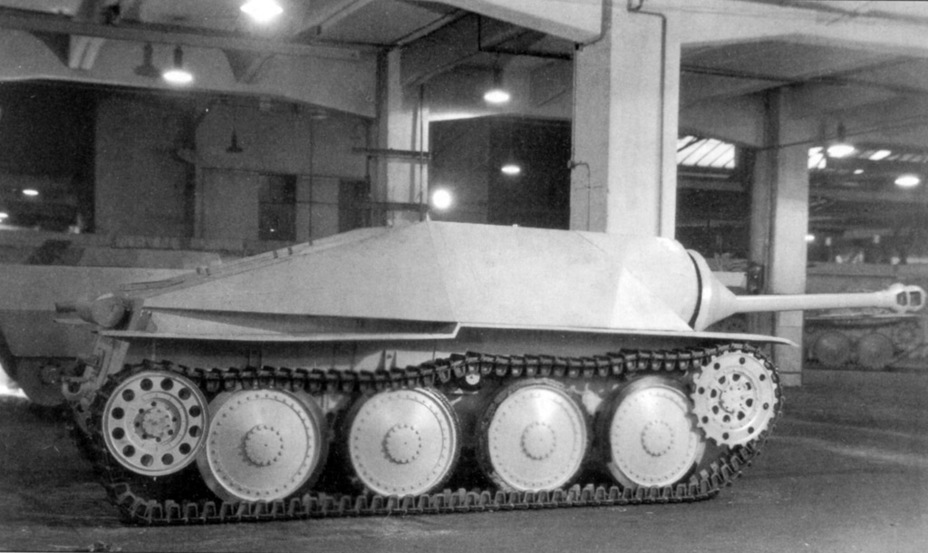
The biggest reason for our hero's appearance was different, however. German industry already produced a vehicle that was better armoured and less noticeable than the Marder III. This was the StuG 40 Ausf. G. Monthly production crossed the 200 unit mark in March of 1943, and Alkett and MIAG produced 345 together in September. Nearly 400 StuGs were produced in October, but British Bomber Command put an end to these records. Alkett's factory in Spandau was subjected to massive bombings on November 23rd and 26th.
Production was partially restored at a secondary plant, but the rates were no longer the same. The StuG IV was developed as a reserve, and 30 of these vehicles were built in December of 1944. This was not enough, especially since the threat of bombing was still present. The Americans proved this several months later by unloading a few B-17s over Alkett. A new SPG production plant was urgently needed.
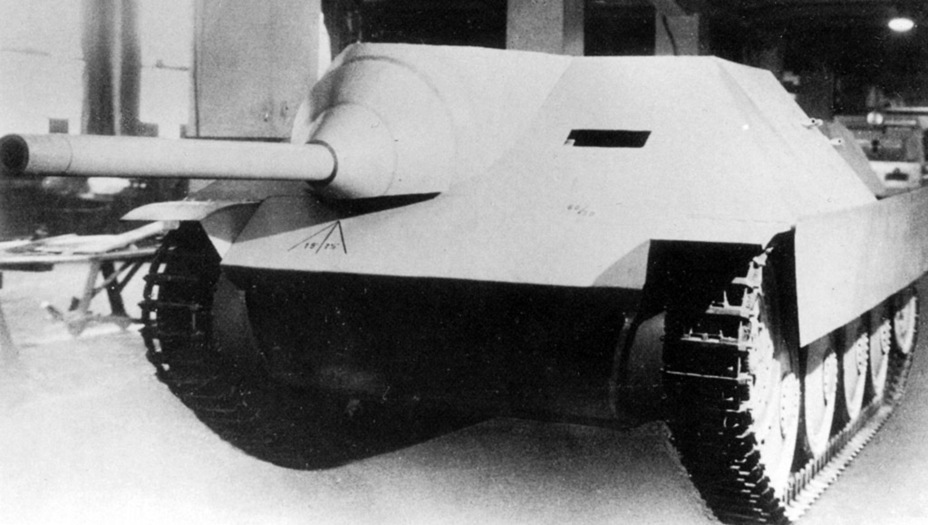
A large meeting was held in Berlin on December 6-7th on the issue of tank building. Hitler authorized the start of StuG IV production at this meeting. A light tank destroyer that BMM (Böhmisch-Mährische Maschinenfabrik, CKD's name under the occupation) was working on since October of 1943 was also approved.
Initially Prague was earmarked for producing heavier vehicles, but BMM didn't have the necessary equipment, especially for lifting. There was no time to re-equip BMM, especially since this sort of re-equipment would threaten Grille and Marder III production. The only choice in this situation was to design a light vehicle.
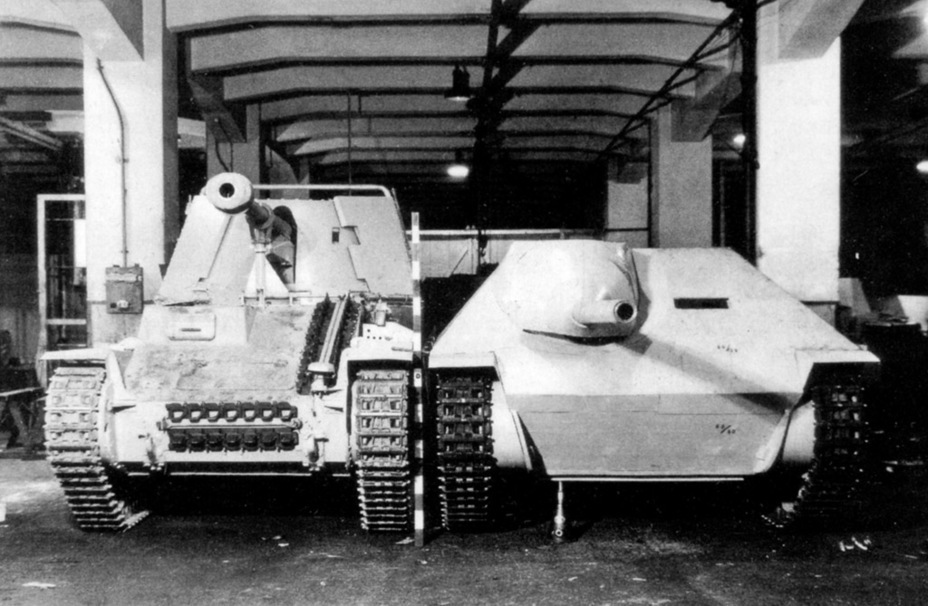
The vehicle, indexed Pz.Kpfw.38(t)-18, was supposed to weigh 13 tons. Development was done under the watchful eyes of the Waffenamt. It was directed by engineer Hans Bader from the 6th Department of the Armament Directorate, who frankly did not trust the BMM design bureau. Bader had his reasons for it. Aleksey Surin, the head of the BMM design bureau, carefully sabotaged his work. He missed deadlines and suggested various solutions that were outright harmful to the design. Nevertheless, the Pz.Kpfw.38(t)-18 was finalized by January 8th, 1944. The looming deadline forced the designers to use as many existing components as possible. As a result, the vehicle's characteristics were much worse than expected. The top speed of the SPG was supposed to be 50-60 kph, but it was impossible to reach this speed with the existing engine.
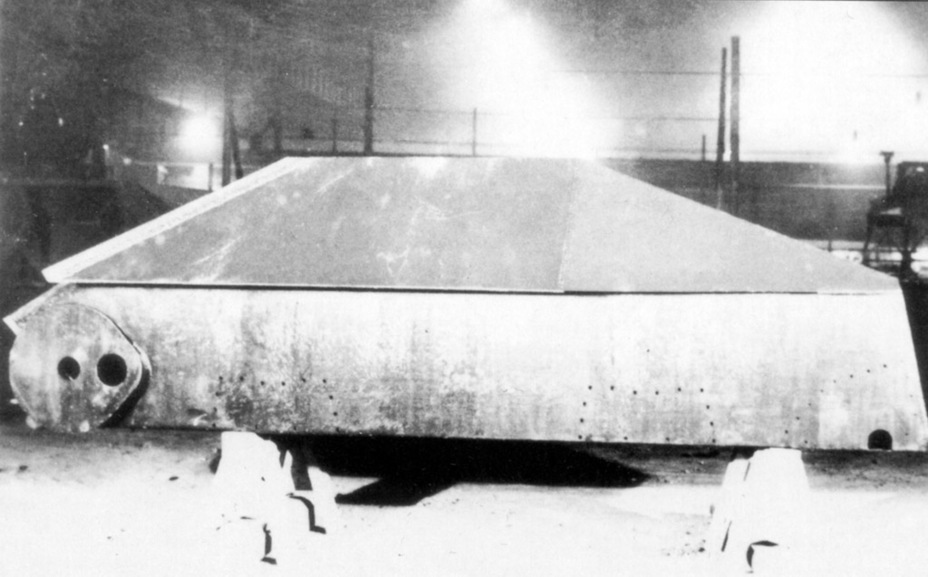
The documents of the 6th Department refer to the vehicle as the leichter Panzerjäger auf 38(t). However, the vehicle in question had little to do with the Pz38(t). The chassis was based on the Pz38(t) n.A., which had an almost entirely new running gear. It was the 220 hp Praga NR1 engine that was the cause of the optimistic top speed estimates. In reality, the 160 hp Praga AE that was already in production had to be used.
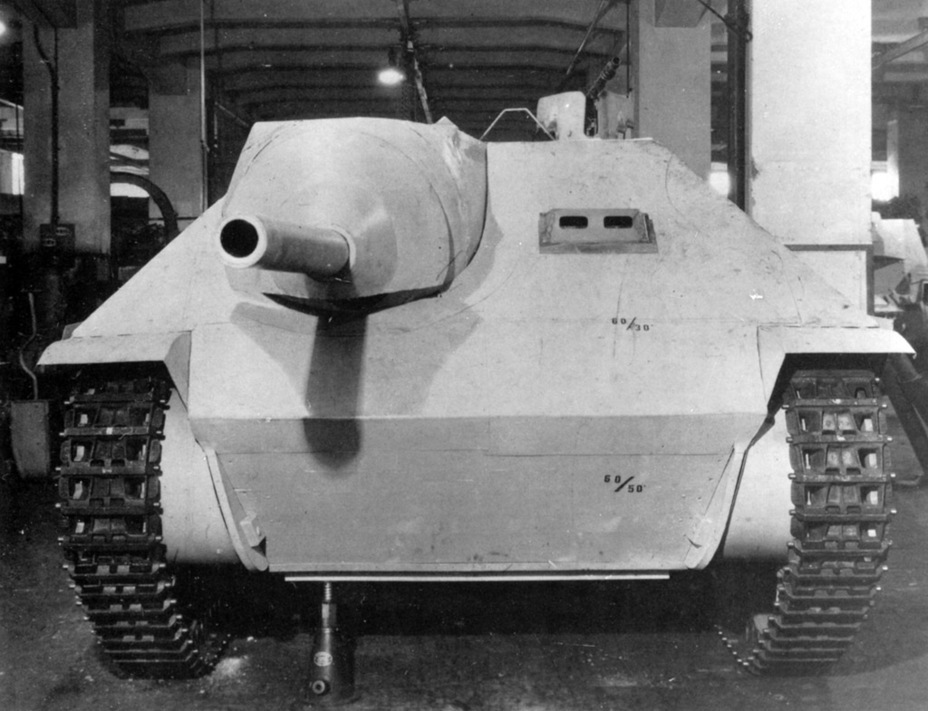
Unlike the Marder III and Grille, which used the Pz38(t)'s chassis, albeit modified, the hull of the new tank destroyer was built from scratch. The designers used experience from the design of the Jadgpanzer IV and (partially) the Jagdpanther. The inspiration drawn from Alkett's designs is clear. For instance, the shape of the hull is similar to that of the modernized StuG 40 with a 70 caliber gun.
Since the transmission elements were fairly compact, there was no need to make a bustle for access to the gearbox and brakes. Like on the Jagdpanther, there were only two front plates, and both were sloped. The thickness of the upper plate was the same as on the Jagdpanzer IV, 60 mm. However, nearly all parts of the leichter Panzerjäger auf 38(t) hull were sloped. Even the lower sides were sloped to compensate for their thinness: only 20 mm. The highly sloped rear plate made the engine compartment fairly simple.
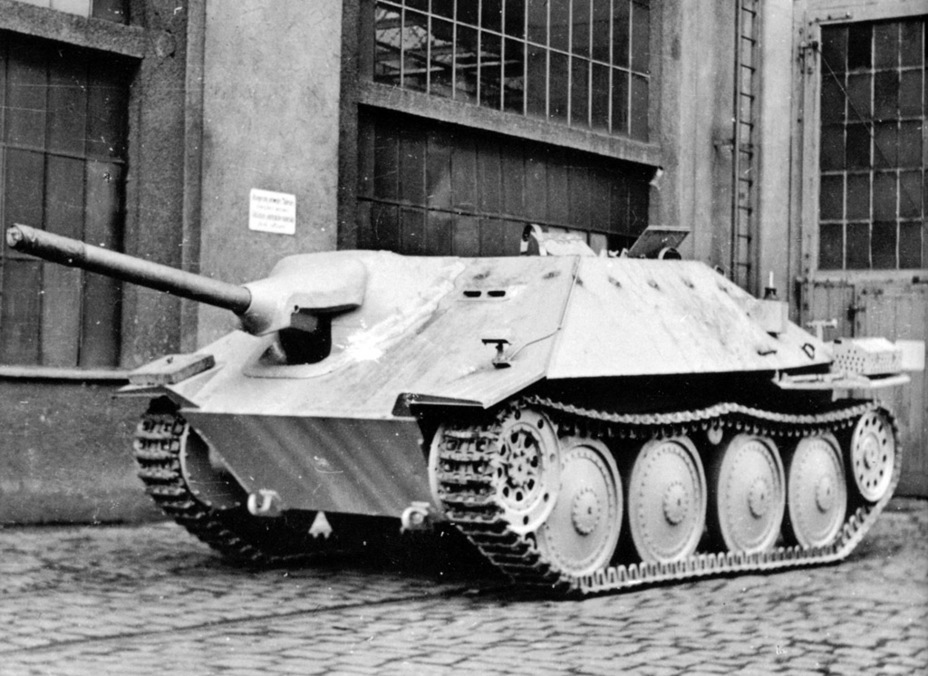
The driver's observation device and fighting compartment roof were also similar to those used on the Jagdpanzer IV. The roof was attached with bolts, which made it easier to remove the transmission. The hatches on the roof were also similar, but due to the smaller size the second half of the hatch had to be put into the engine deck. The breech-loaded mortar on the roof was gone, but it was replaced with a remote controlled MG 34.
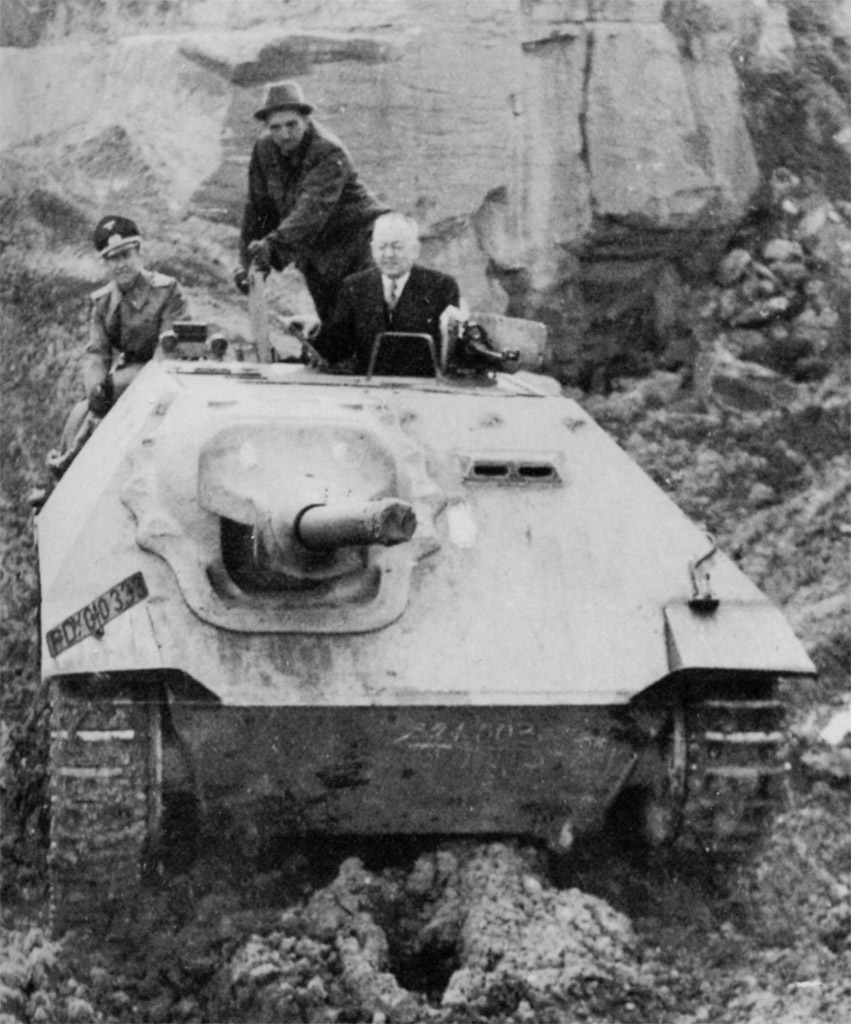
The 75 mm Pak 39 was used as the main armament, same as on the Jagdpanzer IV. Initially, the gun was supposed to have a muzzle brake, but the reworked model already lost it. Experience with the gun mount of the Jagdpanzer IV was used as much as possible, and the overall design was the same. The gun was attached to a frame with a hemispherical gun mantlet. The outside was covered with another complex gun mantlet that looked like the mobile part of a mollusc's shell. This mantlet is often mistakenly called «pig snout mantlet» (Saukopfblende), but in reality it was called «pot mantlet» (Topfblende).
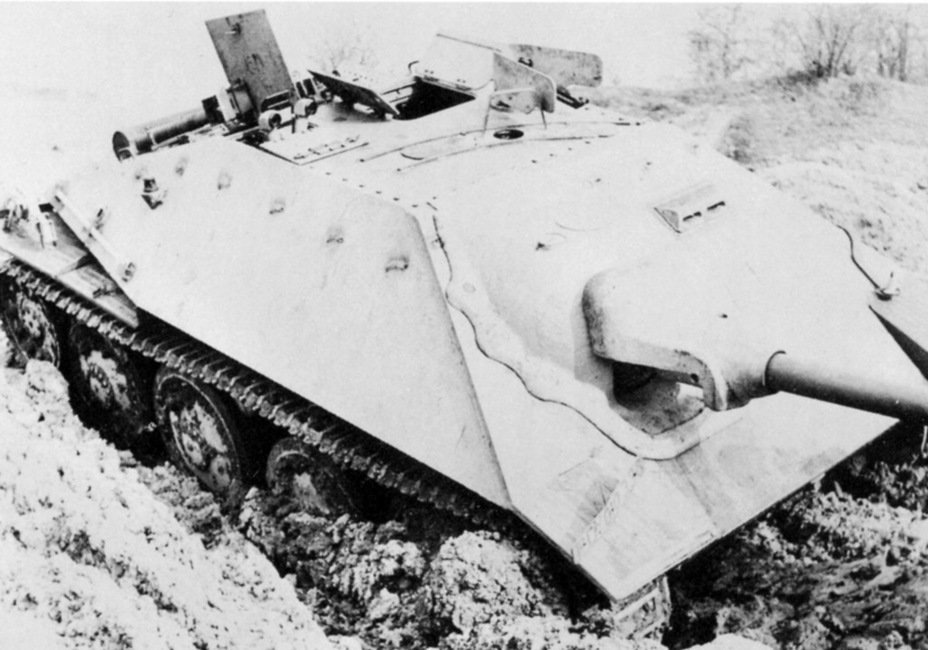
The first variant of the full sized model was complete on January 24th, 1944. A few days later, a Waffenamt commission headed by Captain Thomale arrived at BMM. After inspection, some changes were made to the design, specifically of the gun shield. Overall, the project was approved and accepted for production. The first three prototypes were due in March. In reality, the first prototype was built by BMM on April 1st. Two more followed.
Two factories' efforts
Production of 20 leichter Panzerjäger auf 38(t) was scheduled for April of 1944, then 50 in May, 100 in June, 200 in July, and 250 in August. By November 400 tank destroyers per month were expected. This was not the end of the growth: production was supposed to increase to 450 in February of 1945 and 500 in March. These numbers indicate that the Directorate of the Land Forces placed its hopes on light tank destroyers. Despite having poorer characteristics than the Jagdpanzer IV, they had the same weapon, and cost much less. To ensure secrecy, the new tank destroyer was called Schildau (later Schlagenbach) at BMM.
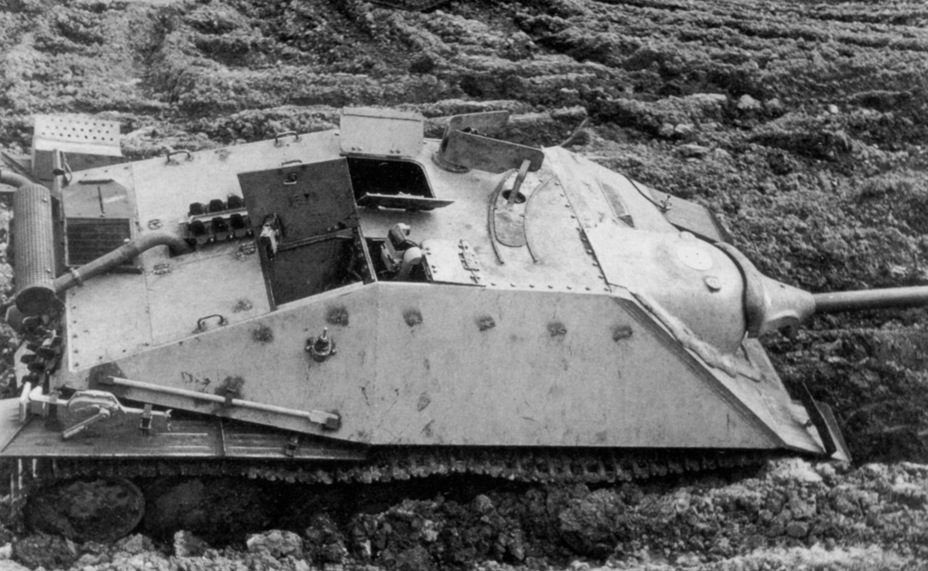
At first, things were going according to plan. As expected, 20 more vehicles were built in April following the three prototypes. A characteristic feature of this batch was a gun shield with a wide base that was attached with many bolts.
These first production vehicles also had Pz38(t) tow hooks, which were not suitable for towing a 16 ton (that was the mass of the new SPG, rather than the planned 13 tons) vehicle. The front road wheels of the tank destroyer were overloaded. Surin clearly knew about these issues, but remained silent. He was taking a large risk, since these issues came up during army trials.
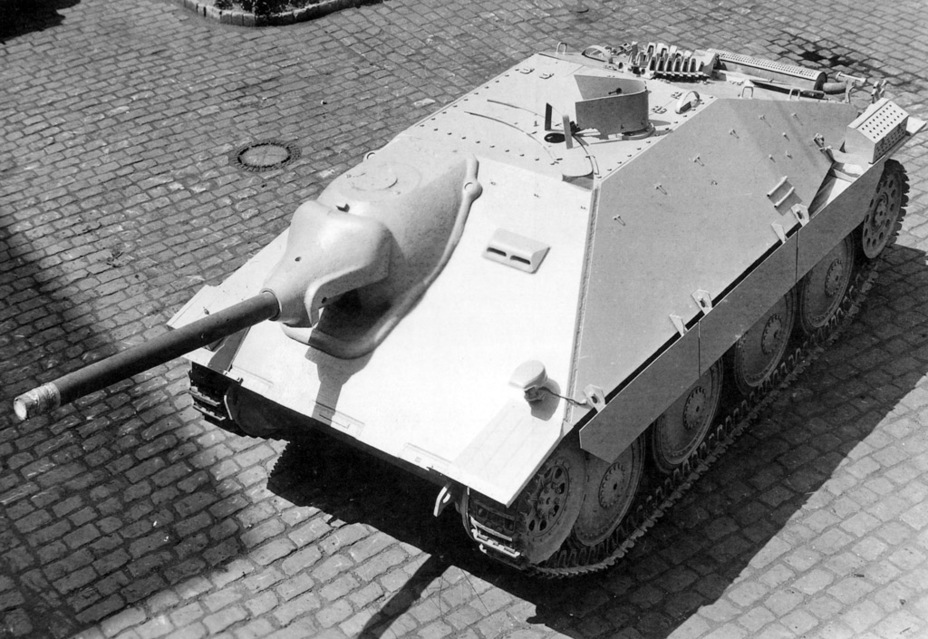
The first changes to the design of the vehicle, now called 7.5 cm Panzerjäger 38(t) or StuG 38(t), were made in May of 1944. The tow hooks were changed and the gun mantlet was also altered. The internal mantlet became more massive, and the gun shield lost its base with bolts.
Surin proposed to introduce a few openings in the front plate covered with 5 mm armour to resolve the issue of overloaded front wheels, which was especially noticeable in the April production vehicles. While the Waffenamt was thinking, this was done with the first 20 vehicles. This way, the designer managed to make the April production vehicles unusable in combat. This was an open act of sabotage, but Surin got lucky. He faked a stroke, which saved him.
Later, this story saved Surin's life once more. The tale about how BMM's chief designer of Russian ancestry was involved in acts of sabotage became known to Soviet security forces. Because of this, Surin was not touched after the liberation of Czechoslovakia. As for the ruined vehicles, they were sent to training units with markings that read «not to be used in combat!»
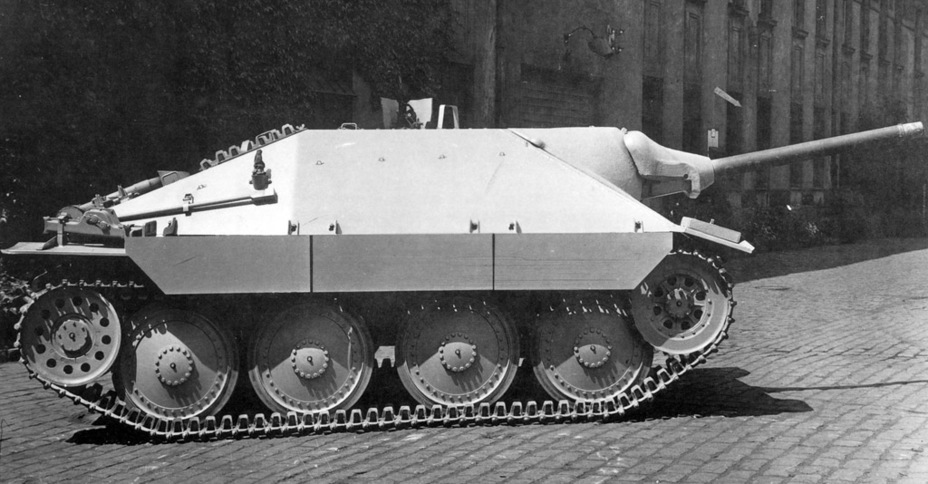
Surin's quiet sabotage could not radically affect the initial production plans. As planned, 100 vehicles were built in June, but production deviated from plans in July. Only 100 vehicles were delivered instead of 200, then 150 instead of 250 in August, 190 instead of 300 in September. Only 133 instead of 350 were delivered in October. 298 vehicles were delivered in November, still 102 under quota. November of 1944 became the peak of production. Instead of 400 vehicles, only 223 were delivered in December. Overall, 1267 Jagdpanzer 38 vehicles were delivered in 1944. This number is impressive, but a far cry from the planned 2073.
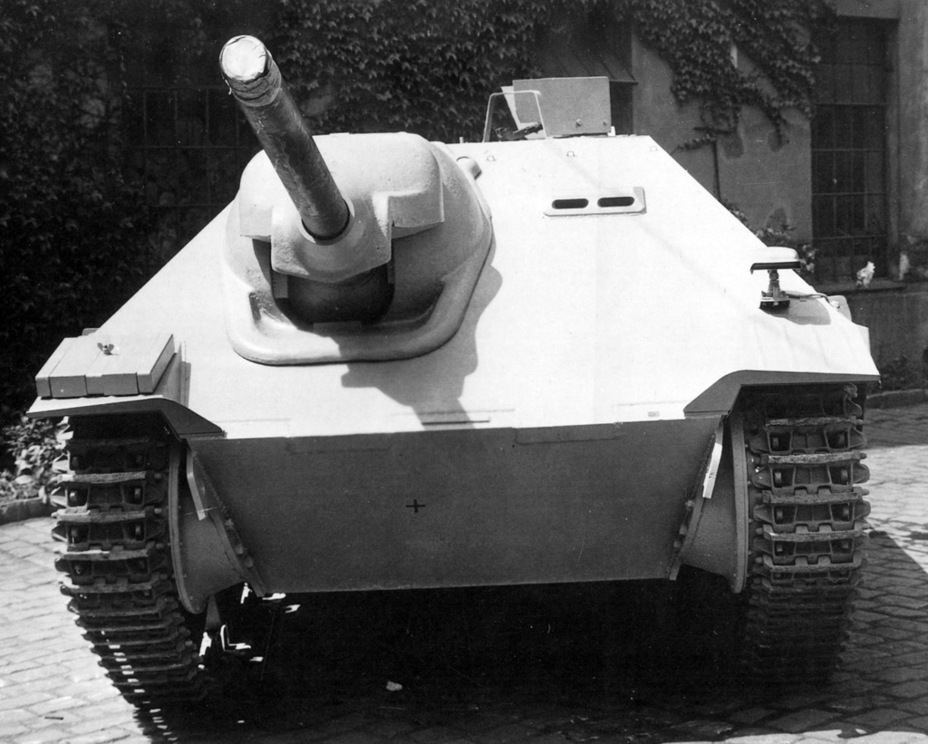
BMM, with its uncontrollable staff, was not the only place where production of the leichter Panzerjäger auf 38(t) was planned. Another company in Pilsen made up a serious tank building force. This was the Skoda company, which avoided offering anything useful to the Germans during the previous few years.
It's hard to accuse Skoda of sabotage. Unlike BMM, Skodawerke, as the company was called in German sources, developed rather progressive designs. Recall the T-25, which had little to do with pre-war work.
On the other hand, these vehicles were not accepted. However, the Germans did adopt some artillery systems that the company developed, and Skoda did contribute to Germany's tank production. Elements of the Tiger (P) and Maus suspensions were designed and produced here. The company itself was one of the weapon manufacturing centers that was subordinate to the SS.
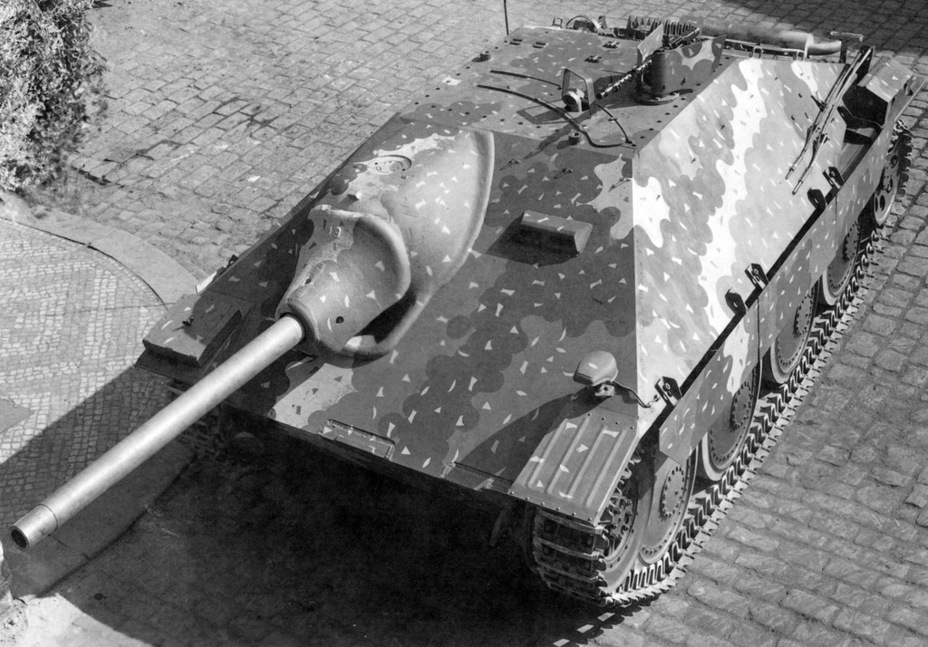
Skoda's production schedule was as follows. The first 5 tank destroyers were due in July of 1944, 50 in August, 100 in September, 150 in October, and by January the production numbers were supposed to catch up with BMM, reaching 500 by March. Skoda's specialists had connections with the new tank destroyer since the beginning, since many companies were involved in its development: 316 in former Czechia and 117 in Germany.
Issues with subcontractors resulted in Skoda falling behind initial plans. By the end of the war, Skoda had 1200 Jagdpanzer 38 vehicles at the factory, of which only 78 had weapons and 150 were fully assembled. BMM had similar issues. Skoda gave the tank destroyer its own code: G-13 (G: SPG, 1: light, 3: third type, considering the Panzerjager I was #1 and Marder III was #2).
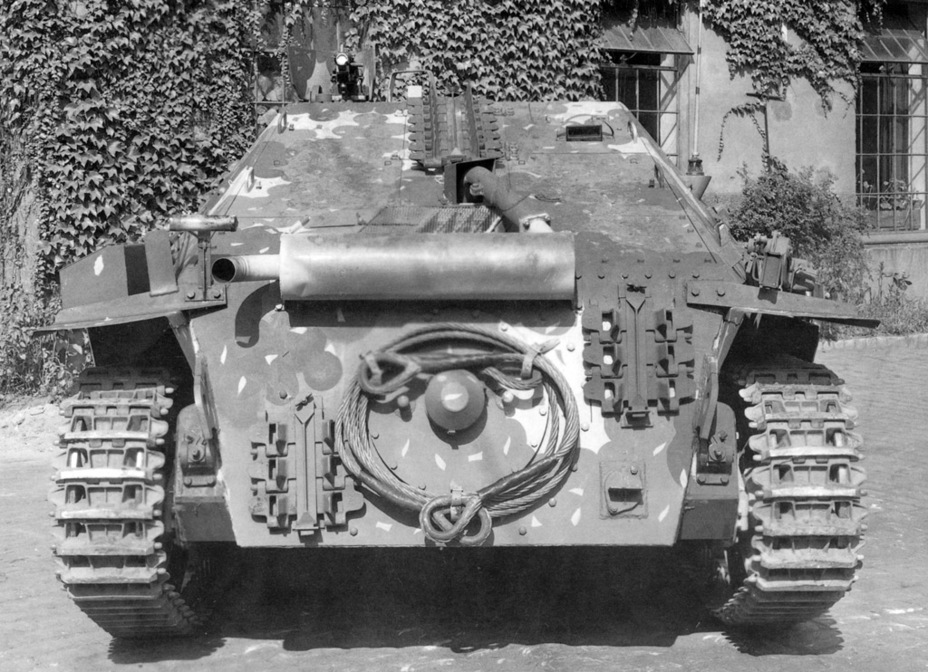
The abilities of the factories in Pilsen were overestimated. The plan was only fulfilled in June, after that the deliveries started to fall behind. Only 20 vehicles were delivered in August, 30 in September, 59 in October, 89 in November, 104 in December, for a total of 310 vehicles out of the planned 810. The factory was clearly not up to this task.
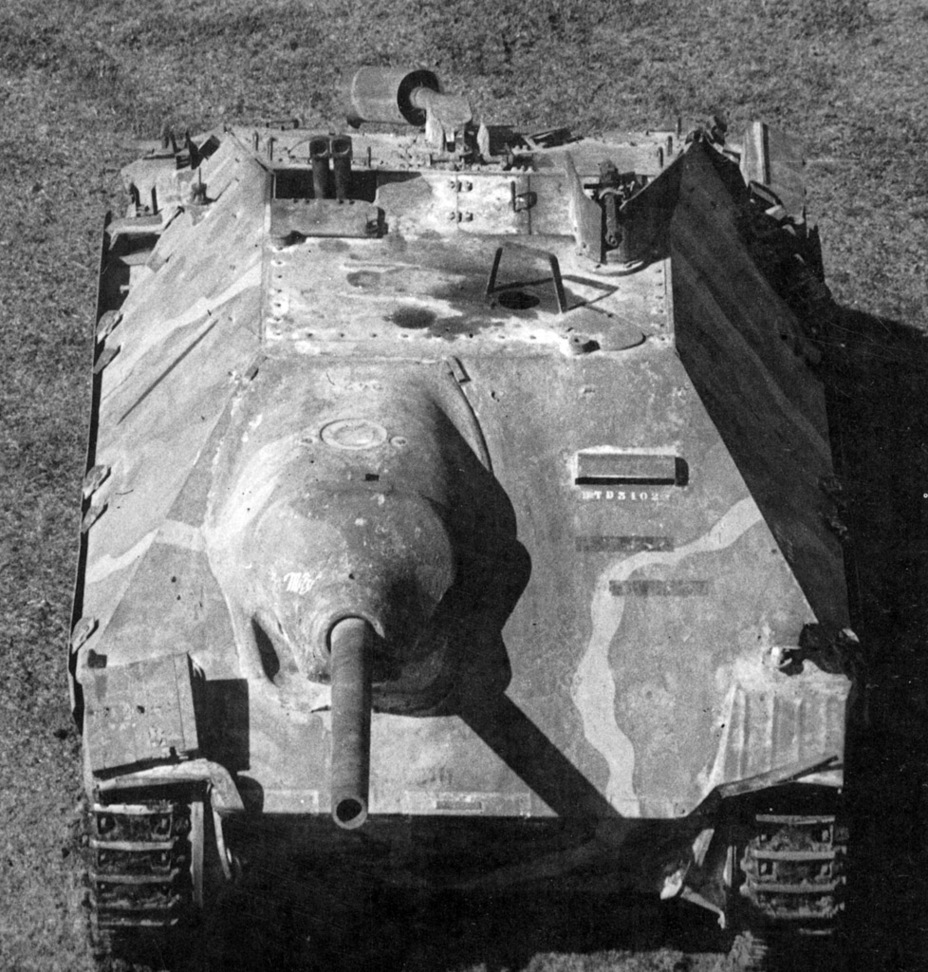
Changes introduced in May of 1944 only partially resolved the issue of overloaded front wheels. Even in factory conditions, the clearance in the front was smaller than in the rear. The situation improved in July-August of 1944. The gun mount was reduced in mass by 210 kg. At the same time, lifting eyes on the gun shield made it easier to remove with a 2-ton crane. The engine deck was also improved: a small opening was added into the hatch so the commander did not have to open it entirely. The designers also got rid of the sliding cover on the air intake.
A new batch of changes was introduced in September. Units complained about breakages of the overloaded front springs. Their thickness was increased from 7 to 9 mm. The road wheel rim was also redesigned, and the number of bolts holding it on was increased to 32. The gun mount was changed again. This was the fifth iteration of the design.
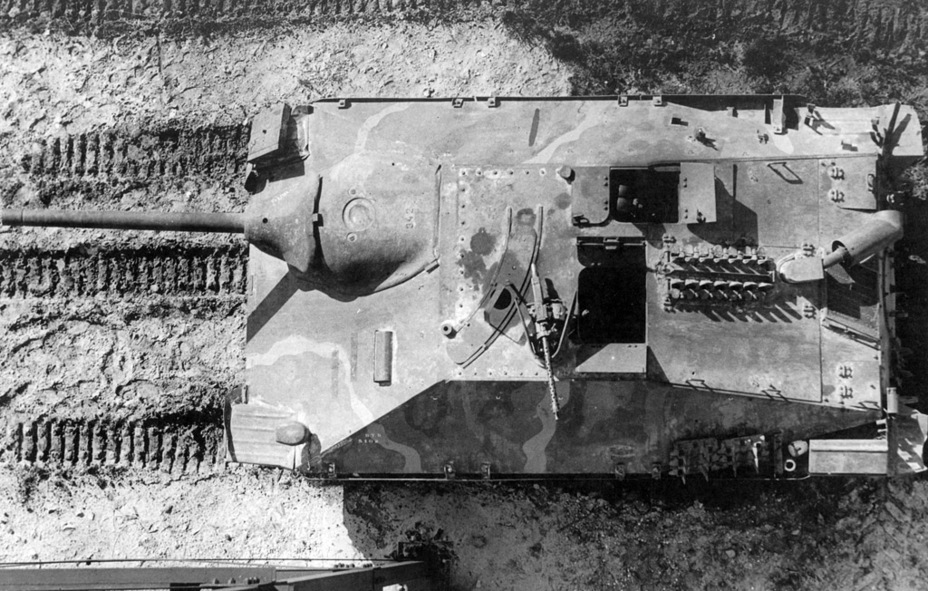
The first changes as a result of use in combat were introduced in September. It turned out that even if a shell ricocheted from the front armour, it hit the observation device bulge and destroyed it. A new observation device was designed. Now the periscopes protruded from the armour without any protection, and only a tin cover protected them from precipitation and dirt from above. The design of the road wheels was also changed at this point: the number of bolts was reduced to 16.
More changes were introduced in November-December of 1944. A small change to the fighting compartment allowed the increase of ammunition capacity by 5 rounds. Second, the gun mantlet changed. Third, the muffler was changed and a flash suppressor added. The design of the idlers also changed.
A few types of idlers were used for the Jagdpanzer 38 since the end of the fall of 1944. In addition, BMM and Skoda vehicles had different camouflage applied.
Attempted modernization
An idea of modernization came up even during preparation for mass production. One of those was the Panzerjager 38(t) Starr (rigid). This designation meant that the vehicle had no recoil system. This change was an attempt to reduce the load on the front of the vehicle. As a result, the mas of the SPG was reduced by 750-1000 kg, and the ammunition capacity increased from 38 to 79 rounds.
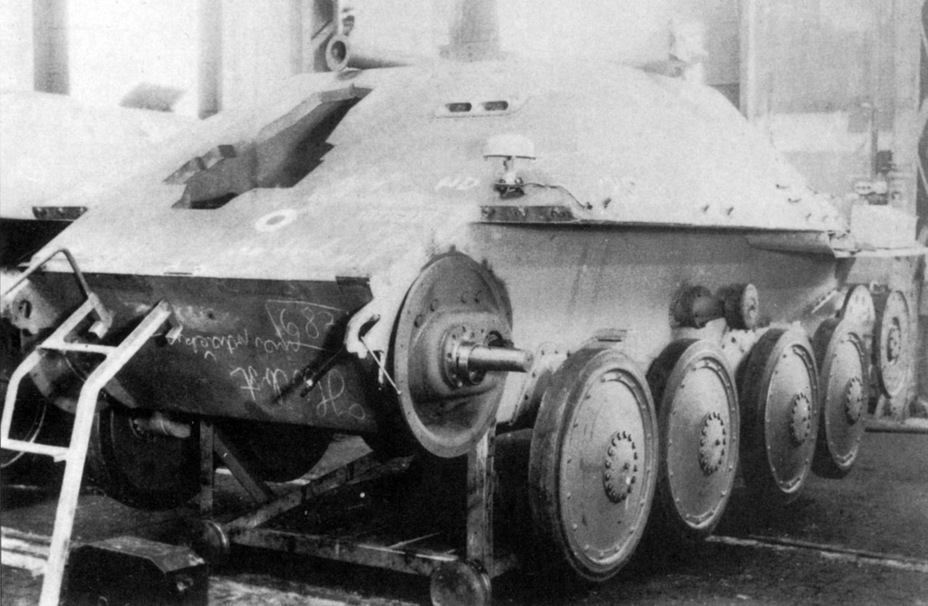
Alkett was responsible for the design. One prototype was converted into the Starr variant in April of 1944. Another vehicle was converted on May 12th. Two more production vehicles were converted in September of 1944. Finally, production of a pilot batch of 10 Jagdpanzer 38 Starr began in December. The last such vehicle was completed by BMM in April of 1945.
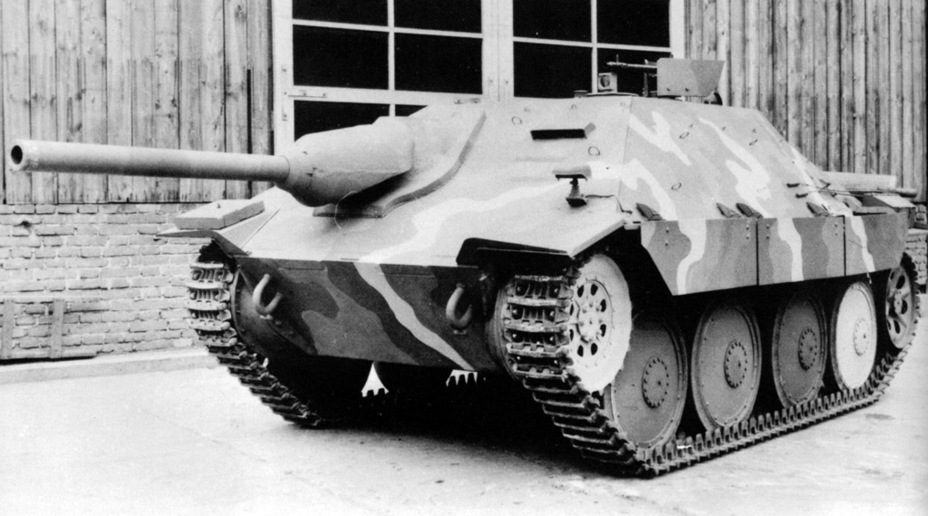
The Jagdpanzer 38 Starr was supposed to enter mass production at the Skoda factory. However, it turned out that the gun without a recoil system had a lower lifespan and the vehicle itself was damaged by firing. Production at Skoda never began and 8 out of 10 vehicles produced never left the training center in Milovice.
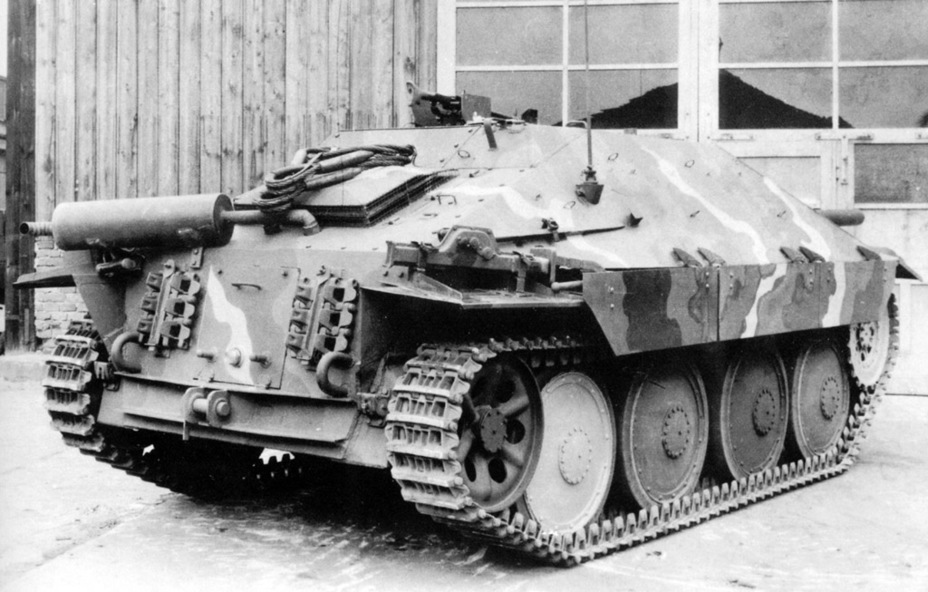
An idea to install a diesel engine into the Jagdpanzer 38 came up in early 1945. Similar ideas came up in March of 1944, but work did not progress past a discussion. Now, the Tatra company had a number of air-cooled diesel engines, including the V-8 Tatra 928. It put out 180 hp, more than the stock Praga AE engine.
The rear of the vehicle had to change to accommodate the new engine. A bulge was introduced near the joint between the engine deck and fighting compartment roof. It housed the air intake and a new commander's hatch. An additional air intake was introduced into the engine deck, and a new hatch was added in the rear. The muffler was also altered. These modifications were supposed to be used on 500 Jagdpanzer 38 Starr vehicles.
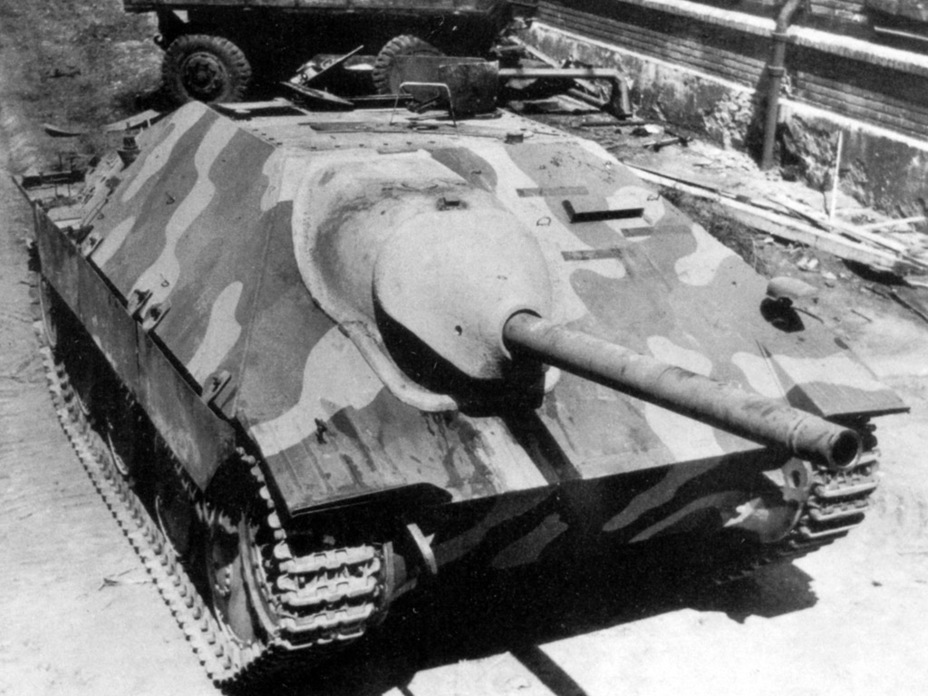
Meanwhile, production of the Jagdpanzer 38 continued. The approaching front line impacted the rate of production, and the Armament Directorate clearly overestimated the ability of the factories. BMM delivered 289 vehicles in January of 1945, 273 in February, 148 in March, and 70 in April. Skoda's numbers were even smaller: 145 in January, 125 in February, 153 in March, and 47 in April. In total, 2827 vehicles were built, including 2612 basic Jagdpanzer 38. The remainder was split between 14 Jagdpanzer 38 Starr, 20 Flammpanzer 38, and 181 Bergepanzer 38.
Plans were revised in early 1945. As of February 1st, it was expected that 350 Jagdpanzer 38 per month would be built from March to June of 1945. 300 vehicles were expected in July, then 50 in August, and production was supposed to shift to the Jagdpanzer 38(d) in September. This vehicle never progressed past designs and assembly of an experimental hull.
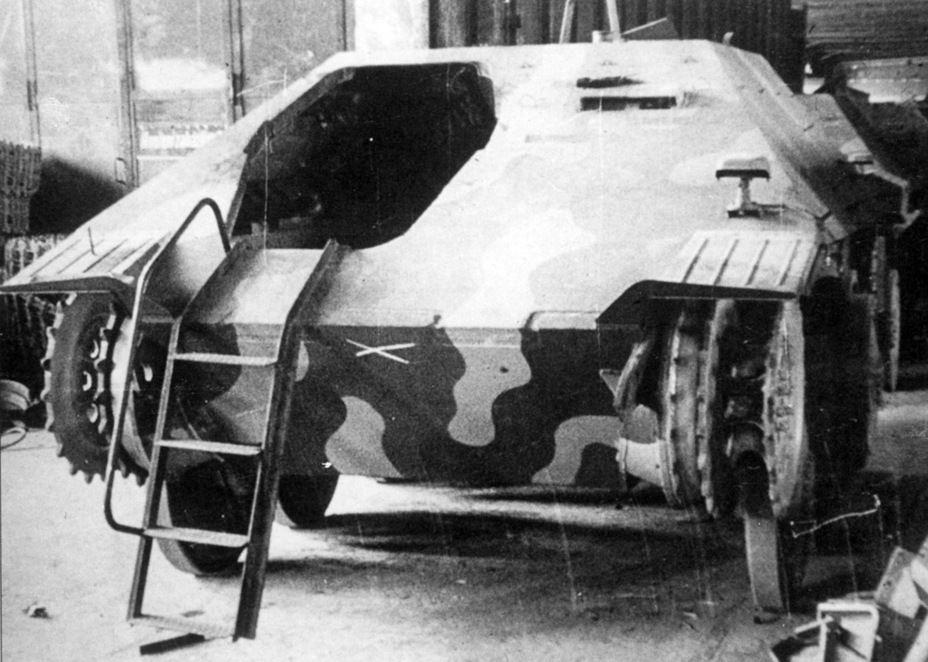
Vehicles built in 1945 differed little from the December production Jagdpanzer 38. The growing number of subcontractors meant that the vehicle could receive one of 4-5 idlers. This also introduced confusion about post-war G-13s allegedly having new idlers. At least two types of track links cast by at least two factories also existed.
A stitch in time
A number of publications refer to the Jagdpanzer 38 as a very effective fighting unit. Descriptions of agile vehicles with tough front armour that ate shells for breakfast are common. Without a doubt, this was the best light anti-tank vehicle created by German designers during the war. However, let us take an impartial look at the fighting ability of the vehicle. The Jagdpanzer 38 had a number of drawbacks, some of which could not be corrected.
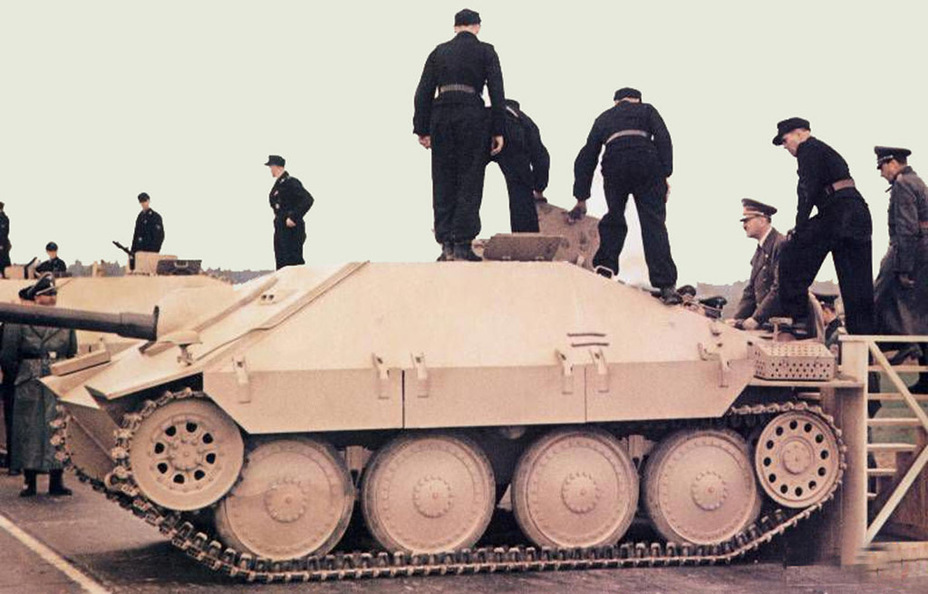
As mentioned above, vehicles produced in April-May 1944 were sent to training units. 100 June production SPGs went there as well. Even at this stage, a large number of defects were discovered, many of which were far from typical «growing pains» experienced by new vehicles. A seriously overloaded suspension led to frequent breakages of the front leaf springs. This issue was only partially resolved in September of 1944 by introduction of stronger springs and lightening of the gun mount.
The other issue, a weak motor, was never solved. A considerable increase in weight compared to the initial project left the vehicle with only 10 hp per ton. To compare, a late production Marder III had a power to weight ratio of 14.5 hp per ton, and the StuG 40 Ausf. G had 11.3 hp per ton. Tales about the agility of this tank destroyer should be reserved for works of fiction.
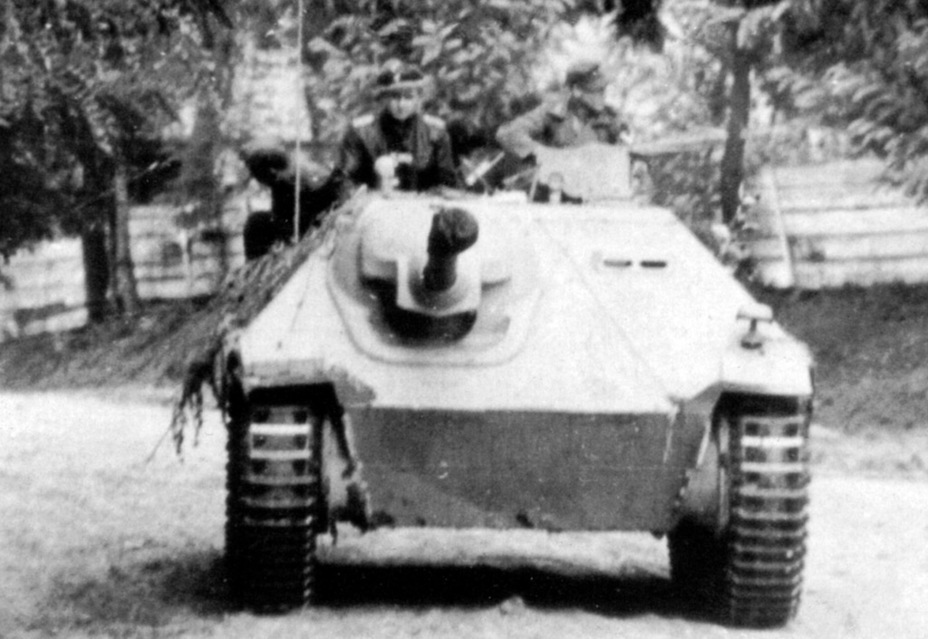
There were also many complaints about the fighting compartment. The Jagdpanzer 38 could hardly be called low. The SPG was 2.1 meters tall, nearly as much as a StuG 40 Ausf. G and over a quarter of a meter taller than a Jagdpanzer IV. The Pz38(t) was taller than its descendant by only 15 cm. However, the fighting compartment of the vehicle was not particularly roomy.
Due to the limited dimensions, the classic German layout (driver, gunner and commander to the left of the gun, loader to the right) could not be used. The commander had to be placed to the right, pushed as far back as possible so he did not impede the loader. As a result, the commander's station was arguably the worst of all German tank destroyers. The only observation device available to the commander was pointing backwards. To look forward, he had to open the hatch and stick his head out, risking catching a bullet. The commander also had a panoramic sight, but he needed to open the hatch to deploy it anyway.
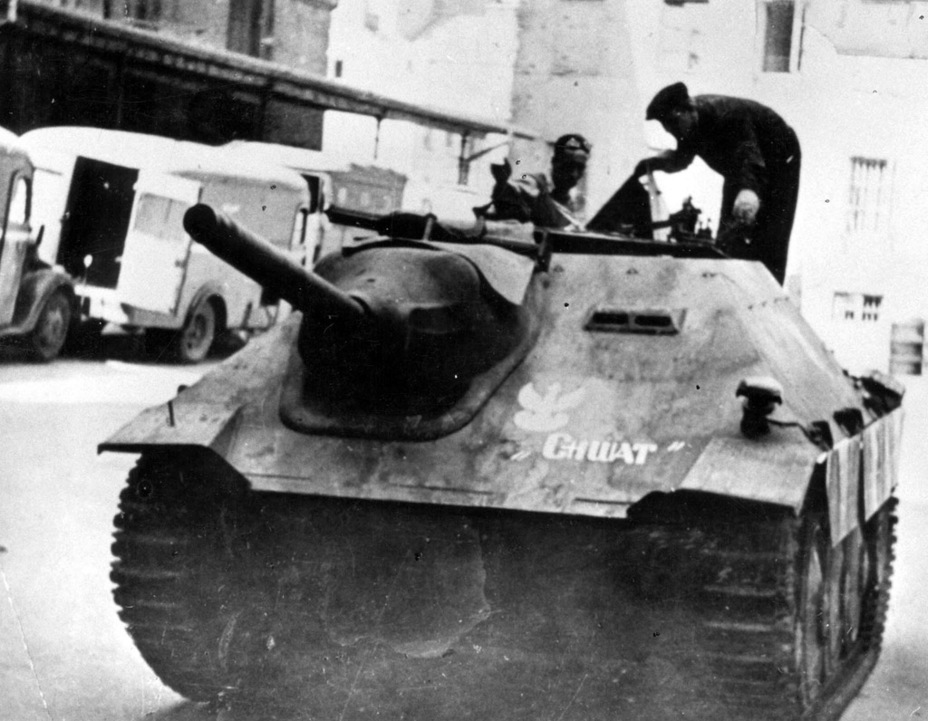
There was another issue. The Jagdpanzer 38 hull was assembled by four companies who were located in occupied Czechia. Czech hulls, especially those produced by POLDI Hütte at Kladno, were very brittle. This was not sabotage, but rather a known problem with Czech armour. As a result, the front armour only reliably protected the vehicle from 75-76 mm rounds, namely the American M3 gun and Soviet F-34 gun. The Jagdpanzer IV initially had the same armour.
However, in the spring of 1944 the Red Army began to acquire T-34-85 tanks, and the Americans brought the Medium Tank M4A1(76)W into action in the summer of 1944. Even 60 mm of sloped armour was not enough to protect from these weapons, which is why the Jagdpanzer IV's armour was thickened to 80 mm. This could not be done on the Jagdpanzer 38, since the front armour was already overloaded. Bigger and heavier shells smashed through the armour, and cracks and spalling occurred even if the shell bounced off.
This is how the vehicle presently on display at Patriot Park was lost. Its side was shot at with a high caliber machinegun. The armour was not penetrated, but spalling likely disabled the driver.
These issues became common with German hulls as well as the war drew closer to its end. Because of this, pretty graphics demonstrating the distance at which the Jagdpanzer 38's enemies could penetrate its front armour should be regarded with a healthy dose of scepticism.
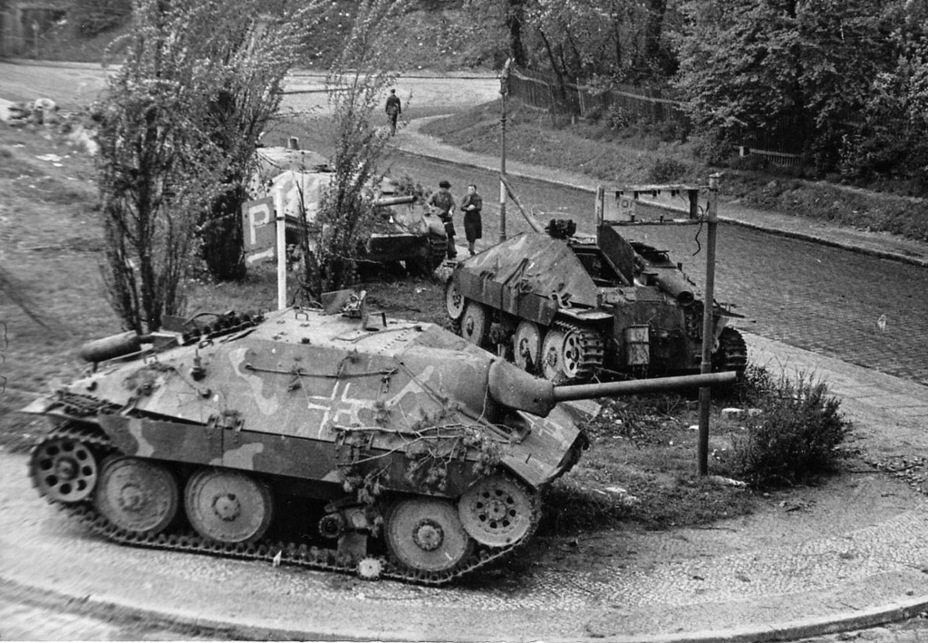
The Jagdpanzer 38 only began arriving in front line units in early July of 1944. The vehicles arrived at either infantry of Panzergrenadier units. Because of this, they were initially called Leichtes Sturmgeschütz auf 38(t) (light assault gun). Variations of this name were used until the summer of 1944. Of course, anti-tank capabilities were important for this vehicle, but it was also regarded as an infantry support weapon. Thick front armour was not an accident. It was necessary for direct support of infantry on the battlefield, for which the Marder III was not suited.
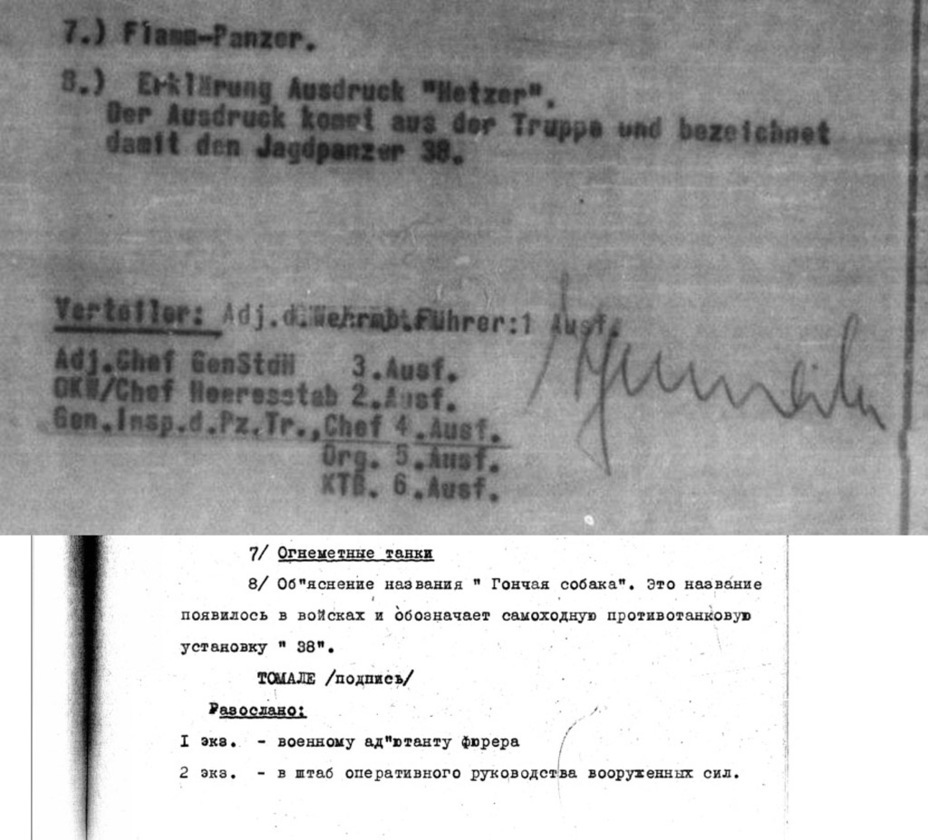
The first vehicles arrived at the 731st and 743rd Tank Destroyer Squadrons, each of which received 45 vehicles. After this, such a large delivery was not made to any unit. Starting with August, a typical deployment consisted of a battery in each anti-tank squadron of an infantry division formed according to TO&E KStN 1149 dated February 1st, 1944. Of course, there were some departures from authorized strength. For instance, the 741st Tank Destroyer Squadron received 31 Jagdpanzer 38s. Batteries of either 10 or 14 vehicles remained the most common unit in which they were used.
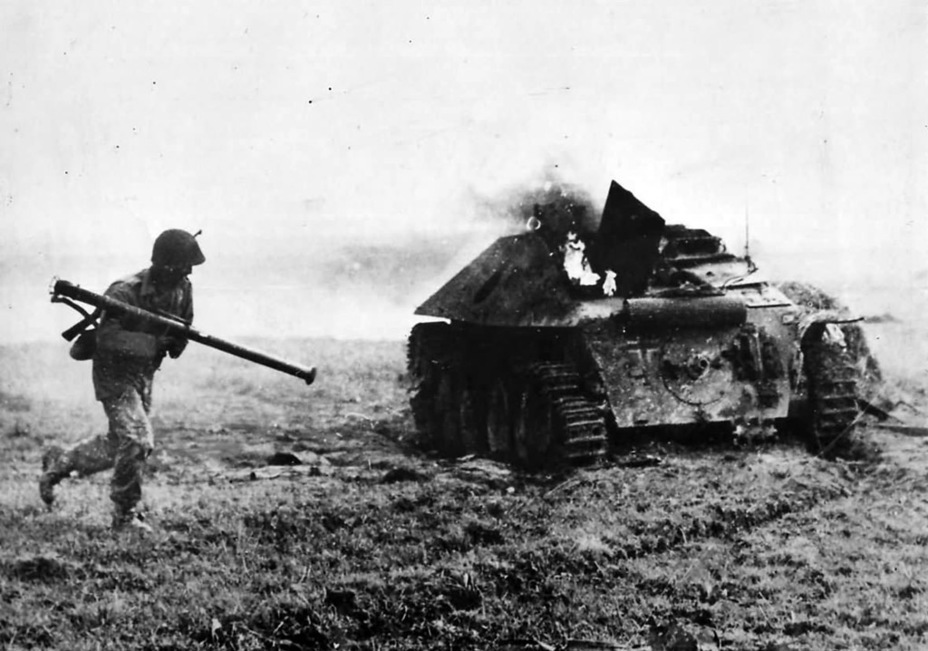
The 743rd squadron was the first to use its new vehicles in battle. This happened in August of 1944, during the Warsaw Uprising. The rebels managed to knock out and capture three of these vehicles. One of the received a personal name, «Chwat».
The army received the Jagdpanzer 38 with praise. Batteries attached to anti-tank squadrons proved themselves well, but their kill claims can be confidently cut in half. For instance, one report claims that two IS-2 tanks were destroyed from 800 meters. This was not achievable by the Jagdpanzer 38 no matter how much it tried. Even according to German diagrams, the guaranteed penetration distance was only 100 meters.
The most common enemy of the Jagdpanzer 38 was the T-34, against which it was indeed effective. This is also true for the Medium Tank M4 armed with a 75 mm gun. The vehicle was praised for its low silhouette, even though compared to the StuG 40 and Jagdpanzer IV it was not that low. The remote controlled machinegun was also praised.
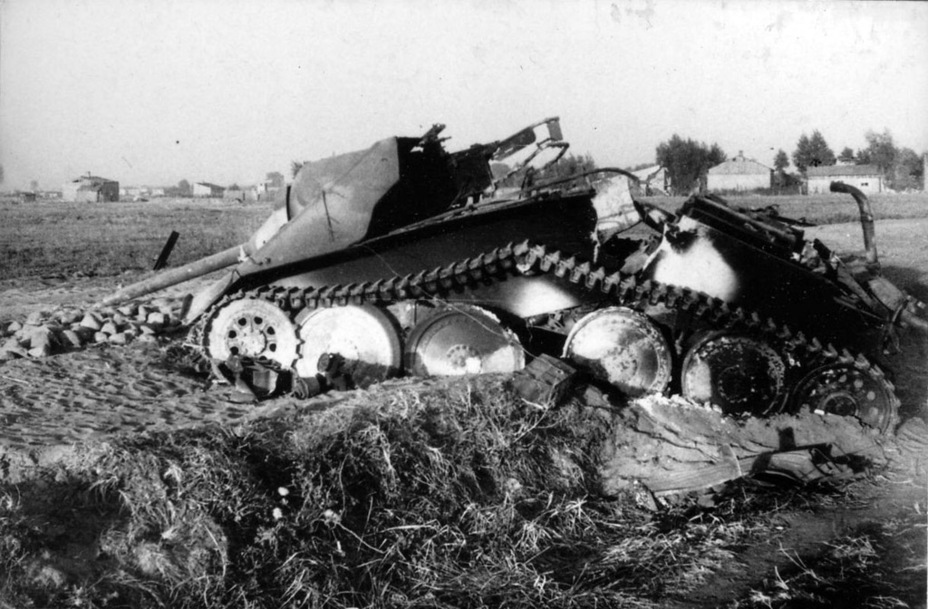
In addition to the aforementioned drawbacks, let us also mention the narrow horizontal traverse angle of the main gun. Many German tank destroyers suffered from this. This forced the crew to keep the engine running, which made it harder to detect an approaching enemy by the sound made by the engine and tracks. There were also constant complaints about broken gearboxes and turning mechanisms. The low power to weight ratio made itself known, especially off-road.
Nevertheless, soldiers and officers in front line units liked the vehicle. Here is where its most popular name, Hetzer (hound), was born. It was never an official index, but Guderian reported on December 4th, 1944, that this is what it was called on the front. Unlike the officially sanctioned Hummel, Wespe, and Nashorn, the name Hetzer never became official. This can be seen in documents, including captured ones.
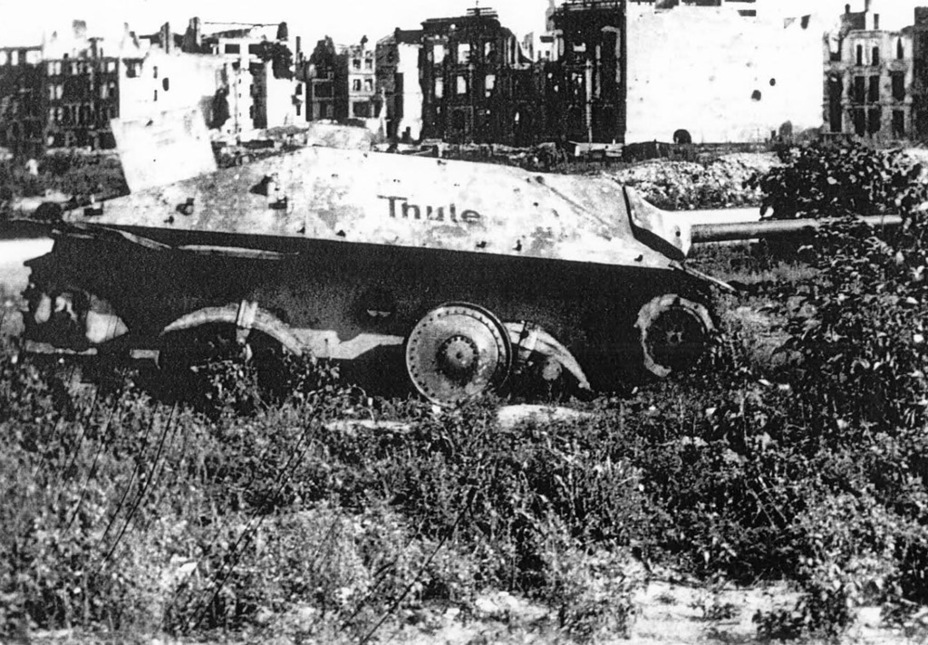
The fall-winter of 1944 was the peak of the Jagdpanzer 38's career. As the Red Army filled up with T-34-85s and the American army with 76 mm Shermans, the effectiveness of German light tank destroyers waned. These vehicles also often had to fight Allied infantry, who was equipped with rather effective anti-tank weapons by 1945. This was especially true for the Americans and their bazookas. There are many photographs of Jagdpanzer 38s knocked out by infantry with large breaches in the side.
The Hetzer should not be overestimated. In practice, this was an ersatz StuG 40, and like many such substitutions, it was significantly worse than its inspiration. The biggest advantage of the Jagdpanzer 38 was its timely presence. The Germans built almost as many of them in one year as all tank destroyers on the PzIV chassis put together. Cheap (only 54,000 Reichsmarks) Czech vehicles came just in time. They did not save the Wehrmacht, but they caused a number of headaches for Allied armies.
Translated by Peter Samsonov. Read more interesting tank articles on his blog Tank Archives.
Sources:
- Hetzer — Jagdpanzer 38, Vladimir Francev, Charles K. Kliment, Milan Kopecky, MBI, 2001, ISBN 80-902238-9-3;
- Light Jagdpanzer: Development — Production – Operations, Walter J. Spielberger, Hilary L. Doyle, Thomas L. Jentz, Schiffer Pub Ltd, 2007, ISBN 978-0764326233;
- Photo archive ČKD;
- Author's photo archive.






